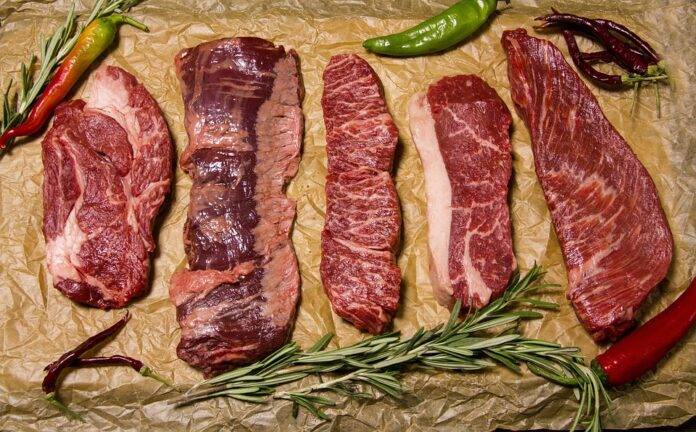Introduction
Climate change is having a significant impact on various industries around the world, and the meat production sector is no exception. As global temperatures continue to rise and weather patterns become more unpredictable, the meat production industry is facing several challenges that are affecting its operations and profitability. In this report, we will explore the top 10 climate change impacts on meat production, including specific data, financials, volumes, and examples where applicable.
Rising Temperatures
One of the most significant impacts of climate change on meat production is the rising temperatures around the world. High temperatures can have a direct impact on livestock, affecting their growth rates and overall health. Additionally, hot weather can increase the demand for cooling systems in animal housing facilities, leading to higher operational costs for meat producers.
Erratic Weather Patterns
Climate change is also causing more frequent and severe weather events, such as droughts, floods, and hurricanes. These extreme weather events can disrupt feed supplies, damage infrastructure, and even lead to the loss of livestock. Meat producers are forced to adapt to these unpredictable weather patterns, which can increase their production costs and reduce their overall profitability.
Water Scarcity
Water scarcity is another major impact of climate change on meat production. As temperatures rise and weather patterns become more erratic, water sources are becoming increasingly stressed. Meat producers rely on water for various aspects of their operations, including animal hydration, cleaning, and irrigation for feed crops. Water scarcity can lead to higher costs for meat producers and may even force some operations to shut down.
Reduced Crop Yields
Climate change is also affecting crop yields, which are a crucial component of animal feed. As temperatures rise and weather patterns become more unpredictable, crop production is becoming more challenging. Reduced crop yields can lead to a shortage of feed for livestock, forcing meat producers to seek alternative sources or pay higher prices for feed ingredients.
Increased Disease Risk
Higher temperatures and changing weather patterns can also increase the risk of disease outbreaks among livestock. Heat stress can weaken animals’ immune systems, making them more susceptible to diseases. Additionally, changes in temperature and precipitation patterns can create more favorable conditions for disease vectors, such as ticks and mosquitoes. Disease outbreaks can lead to significant losses for meat producers, both in terms of animal health and financial impact.
Regulatory Pressures
As the impacts of climate change become more apparent, governments around the world are implementing stricter regulations to reduce greenhouse gas emissions and mitigate climate change. Meat producers are facing increasing pressure to reduce their environmental footprint and adopt more sustainable practices. Compliance with these regulations can require significant investments in new technologies and infrastructure, leading to higher costs for meat producers.
Consumer Awareness and Demand
Consumers are becoming more aware of the environmental impact of meat production and are increasingly seeking out sustainable and ethically produced meat products. Climate change is driving a shift in consumer preferences towards plant-based alternatives and organic, grass-fed meats. Meat producers that fail to adapt to these changing consumer demands may risk losing market share and revenue.
Supply Chain Disruptions
Climate change can also disrupt meat production supply chains, leading to delays in production and distribution. Extreme weather events, such as hurricanes or wildfires, can damage infrastructure and transportation networks, making it difficult to deliver products to market. Supply chain disruptions can result in lost sales and revenue for meat producers, as well as damage to their brand reputation.
Insurance Costs
As the frequency and severity of weather-related disasters increase due to climate change, insurance costs for meat producers are also on the rise. Insuring livestock, facilities, and equipment against weather-related risks can be expensive, especially in regions prone to extreme weather events. Higher insurance costs can eat into meat producers’ profits and make it more challenging to operate profitably.
Opportunities for Innovation
Despite the challenges posed by climate change, there are also opportunities for innovation and adaptation in the meat production industry. Meat producers can invest in sustainable practices, such as regenerative agriculture and carbon sequestration, to reduce their environmental impact and meet consumer demand for ethically produced meats. Adopting new technologies, such as precision farming and renewable energy, can also help meat producers mitigate the effects of climate change and improve their long-term sustainability.
Conclusion
In conclusion, climate change is having a significant impact on meat production, affecting everything from rising temperatures and erratic weather patterns to water scarcity and increased disease risk. Meat producers are facing a host of challenges as they navigate the changing climate and evolving consumer preferences. However, there are also opportunities for innovation and adaptation that can help meat producers thrive in a changing climate. By investing in sustainable practices and new technologies, meat producers can mitigate the impacts of climate change and ensure the long-term viability of their operations.




